Reviews
Slave! / Sweet Suzy
Russ Meyer
USA, 1973
Credits
Review by David Carter
Posted on 08 September 2008
Source RM Films International VHS
Categories Bosomania!: The Sex, the Violence, and the Vocabulary of Russ Meyer
Undiscouraged by the commercial failure of The Seven Minutes and the early termination of his three-picture deal with Twentieth Century Fox, the ever prolific Russ Meyer released Black Snake, his twenty-third film in eleven years. The film was Meyer’s return to independent filmmaking, but saw him continue the uncharacteristically chaste format he began with The Seven Minutes. The prior film - a legal potboiler - retained Meyer’s core theme of sexuality’s place in American society and contained many of his regular cast of players, however; Black Snake offered a completely new Meyer experience. It is, therefore, the second and final anomalous work in his oeuvre, dismissed - often sight unseen - as “not Meyerian enough” by even his most ardent devotees. How can a Russ Meyer film not be a “Russ Meyer film” though? Even with the deviation of form and focus, Black Snake remains a vital yet underappreciated part of Meyer’s vision and is a necessary component to any assessment of his body of work.
Black Snake’s central character is Lady Susan Walker, the mistress of the Blackmoor Plantation on the tiny island of San Cristobal. Slavery has been abolished on most West Indian islands yet Susan is able to continue the practice through a team of French mercenaries and the frequent flogging of any who cross her. She has two assistants: Raymond, the Parisian-educated homosexual leader of the mercenaries, and the Irish brute Joxer, the field boss. The uneasy relationship between the three has not hampered profits and the plantation holds an esteemed position back in England. English nobleman Charles Walker expresses his concerns about Susan, but his patron advises him that she is untouchable. His interest in Susan is more personal than fiduciary; his brother Jonathon was married to Susan when reports of his death reached England. He believes that Susan is somehow to blame for his brother’s death, and to get to the bottom of the matter he poses as the commoner “Ronald Sopwith” and presents himself at Blackmoor as the new accountant.
Charles/Ronald has barely arrived on the island when he learns first hand of true nature of Susan’s treatment of her slaves. His first taste of plantation life is watching Joxer and the French mercenaries chase a runaway slave into the waiting mouth of a shark, laughing as the man is ripped to pieces. Charles’ constant petitioning for a more humane treatment of the workers exposes him as a nobleman but he manages to keep his true heritage a secret from Susan. She isn’t warm to his views on slavery but she is keen on another man to bed. Charles and Susan’s first attempt at a tryst is interrupted by a drunken Joxer and, more surprisingly, by the supposedly dead Jonathon Walker. The slaves refer to him as a “Dobby,” or undead creature, but it is very obvious to Charles that his brother is alive and well. Armed with the knowledge that Susan is responsible for Jonathan’s current deteriorated mental state, Charles increases his challenges to Susan’s authority and incites the slaves into open revolt.
Racial issues were new territory for Meyer but were a bankable commodity at the time of the film’s release. Black Snake could realistically be considered part of the first wave of blaxploitation cinema and the first such film to transpose these racial themes into a period drama—Black Snake preceded Mandingo by several years. The key theme of the film is played out through a subplot rather than through the main story of Charles and Susan: a very religious elder slave and his rebellious son Joshua provide both the film’s true conflict and conscience. Joshua rejects his father’s call for peace and instead urges his fellow slaves to take up arms against their oppressors. Here Meyer uses a technique similar to the one he used in Beyond the Valley of the Dolls, which incorporated the Manson Family slayings into the film’s climax. Joshua and his father are thinly veiled ciphers for Martin Luther King, Jr., and Malcolm X, with the father character even physically resembling King to a degree. Meyer extends the obviousness of the metaphor when Joshua is crucified on a large “X,” enabling his father’s revocation of his ideas of reconciliation in favor of violent rebellion.
Perhaps the most telling aspect of the racial issues presented in the film is the depiction of whites or characters behaving in the same manner as the whites. Lady Susan and Joxer are the obvious villains in this regard; their disregard for the lives of the slaves is shown as a symptom of their overall immorality. Raymond and the mercenaries treat the slaves as being beneath them; Raymond in particular takes every opportunity to point out the differences of heritage between himself and the slaves. Charles is the lone voice for compassion among the whites, but he is also shown abusing his power over the slaves by sleeping with the beautiful slave girl Cleone. When the rebellion starts, Charles tries to reason with Joshua’s father but his pleas fall on deaf ears. Susan, Joxer, and the mercenaries’ cruelties are repaid in kind and only Charles and Jonathon are spared because they have suffered as well. The verbal component is not insignificant to where the onus is placed; any character that refers to the slaves as “niggers” suffers a bloody onscreen death.
The conspicuous point Meyer is making is that violence and rebellion are acceptable solutions to an oppressive society. No other early blaxploitation film - much less one by a white filmmaker - would take such an extreme position. Meyer is again in the societal outsider’s position with the stance he takes in the film; instead of pushing the sexual envelope, he’s now advocating a violent leveling of social inequalities. Black Snake’s coda sees nude whites and blacks cavorting together in a field - -one of the few moments that visually and narratively resembles Meyer’s other films - reinforcing the idea that Lady Walker’s slaves were justified and that the world was a better place with Susan and Joxer dead.
Though it plays only a small part, it is naïve to think that Black Snake is devoid of any sexuality. We are first introduced to Lady Susan as she whips a runaway slave. The slave is staked to the ground and stripped to the waist before the black-clad Susan begins whipping him in a frenzy. As the speed and brutality of the beating steadily rise, the camera pans to the onlookers who have looks of ecstasy on their faces. If the metaphor was not yet clear enough, Meyer then uses a brief cut away to a slave subtly performing mock-fellatio on a flute while the sound of whip cracks echo on the soundtrack. It is Black Snake’s first foray into sexuality and sexual deviance, and becomes a common theme seen throughout it.
However, none of the sexual themes are celebrated, as they are in other Meyer films. Meyer had depicted polyamory and homosexuality in as liberating in earlier works, but Black Snake portrays them as destructive. Susan receives the primary onus of this destructive sexuality through the overt condemnation of her promiscuity and through the subtle hints of her sexual sadism. The title of the film refers directly to the characters referring to the whip as a “black snake,” but in many regards it is a bawdy reference to a penis. Thus Susan’s proclivity for the whip is both symbolic of her sexual exploits and her cruelty. Her cohort Raymond’s homosexuality is subjected to the same derision as he is depicted as lecherous and voyeuristic. Each to a degree is enslaved by their sexuality. Susan and Raymond’s mutual attraction for Charles and their attempts to possess him eventually lead to their downfall. Ultimately, Black Snake’s world is one where both sexual and personal freedom is oppressed.
Black Snake occupies an uneasy place in Meyer’s catalog, perhaps even more so than The Seven Minutes. It would be impossible to discount it as a misstep, however. The fiercely independent Meyer made exactly the film he wanted to make; his only “second thoughts” take the form of a nude body double for lead actress Anouska Hempel. The flashes of the Meyer visual style in the film echo the brief moments in his other work where a similar stance on race issues occurs; albeit in a subtler forms such as Beyond the Valley of the Dolls’ depiction of Pet Danforth’s relationships and sexuality being no different than those of the white characters. Black Snake isn’t a departure for Meyer; it is more of a confirmation that ideas beyond “Bosomania” exist in his work. The sex takes a backseat to the politics for a change, and fans should embrace the film as a vindication that Meyer was more than a flesh peddler.
More Bosomania!: The Sex, the Violence, and the Vocabulary of Russ Meyer
-

The Immoral Mr. Teas / Eve and the Handyman
1959 / 1961 -
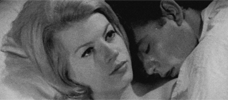
Lorna
1964 -
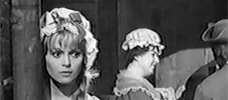
Fanny Hill
1964 -

Mudhoney
1965 -
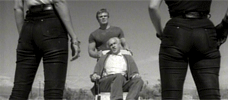
Faster, Pussycat! Kill! Kill!
1965 -
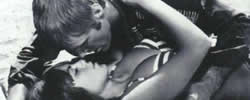
Motor Psycho
1965 -
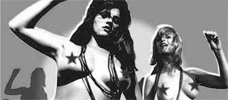
Mondo Topless
1966 -

Common-Law Cabin
1967 -

Good Morning and… Goodbye!
1967 -
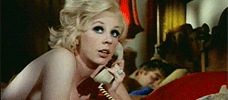
Finders Keepers, Lovers Weepers!
1968 -

Vixen!
1968 -

Cherry, Harry & Raquel!
1970 -

Beyond the Valley of the Dolls
1970 -

The Seven Minutes
1971 -

Black Snake
1973 -

Supervixens!
1975 -

Up!
1976 -

Beneath the Valley of the Ultravixens
1979
We don’t do comments anymore, but you may contact us here or find us on Twitter or Facebook.



